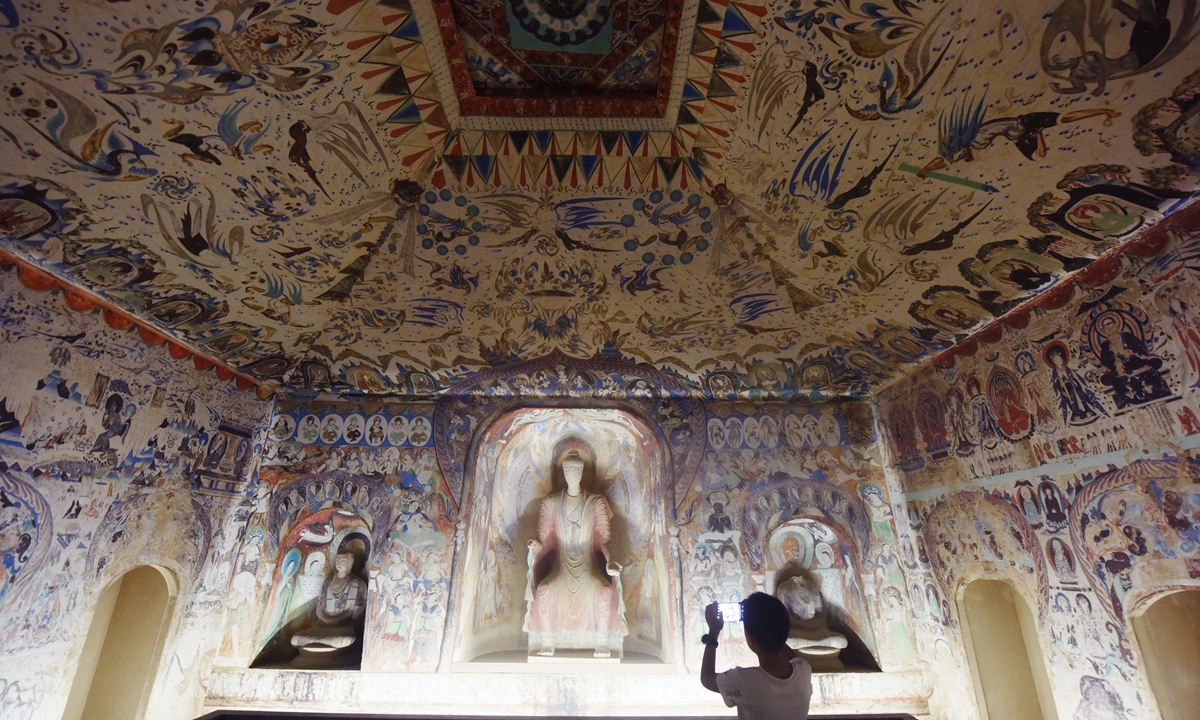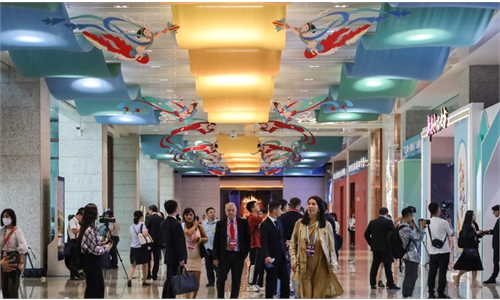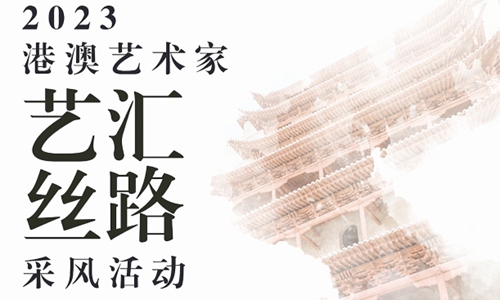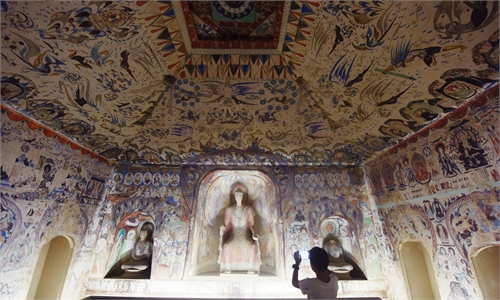ARTS / ART
China-UK digital asset management platform to preserve Dunhuang culture's legacy

A visitor takes a photo inside a 1:1 replica of the Dunhuang Mogao Grottoes at a Dunhuang cultural relic exhibition held in Hangzhou, East China's Zhejiang Province on July 18, 2023. Photo: VCG
A platform for managing the digital assets of the UNESCO World Heritage Site known as the Mogao Caves in Dunhuang, located in Northwest China's Gansu Province, has recently been established, encompassing digitized data from over 100 fresco paintings.
Digital scans from 290 of the caves and grottoes at the site have been uploaded to the platform. A total of 45 painted statues and seven major relic sites have also been recreated through 3D reconstruction. Additionally, 110 fresco paintings have been digitized and stored on the platform. Other precious materials such as historical documents, art and old photos have also been scanned and uploaded.
Started in 2021, the digitization efforts were part of a major science and technological project supported by Gansu Province. Led by the Dunhuang Academy, the project was jointly supported by the British Library in the UK. Before establishing the project, the China-UK team conducted research on numerous cultural relics in the caves. A data management system based on the Open Archival Information System (OAIS) was built along with a detailed classification system for the digitized works.
The development of the project may sound complex, but according to Deng Bohui, an expert specializing in the digital conservation of cultural relics, it can be viewed as a "routine that incorporates technological methods for preserving immovable cultural objects."
Deng told the Global Times that these digital measures are not limited to any particular culture but can be used anywhere and they are considered to be "lifesavers" for immovable heritage sites, especially those that are fragile in nature.
Wu Jian, a research fellow at the Dunhuang Academy, emphasized that the current collaboration between China and the UK hasn't just benefited the conservation of Dunhuang culture, it also shines a light on a "new path for international collaboration in the field of cultural relics."
"The model of international cooperation for the digital return of Dunhuang relics lost overseas is being explored through this project. It sets a great example for the potential return of other Dunhuang artifacts that have been lost overseas," said the expert. So far, Dunhuang relics have been discovered in countries such as the US, Russia, India, Japan, and France.
Museum expert Li Liyang told the Global Times that "digital return" means making digital copies of a relic. It is a "trendy approach used to extract a relic's educational and social value" before they are physically returned to their home countries.
This creative means has also been commonly applied at other Chinese heritage sites like the Longmen Grottoes in Henan Province. In July, the Luoyang Museum has launched a special exhibition showing visitors how data aggregation technology can give new life to cultural relics.
The exhibition for the very first time displays the digital recreations of seven Longmen culture relics that were lost overseas. A statue that once has its "body" and "head" separated in different corners of the world have been "reunited."
"Seeing these relics is like opening up a box that allows me to imagine history. I can feel the confidence of Chinese culture," a netizen who went to the exhibition posted on Sina Weibo.
Dunhuang culture's digital journey started 30 years ago. Meanwhile, more than 100,000 Buddhist statues in the Longmen Grottoes had been added to a digital archive by 2005.
Deng told the Global Times that China's strategy of digitizing cultural relics has changed goals.
"At the very beginning, we thought more about using technology to just save relics and also to replace outdated research approaches. But with China's technological development, we can now confidently think about using digital means in areas such as exhibitions and international collaboration," Li said.
"By further enhancing the sustainable development of the Digital Dunhuang project, we will create a complete digital cultural heritage of the Mogao Caves that can be permanently preserved and used for sustainable purposes," Wu said.



